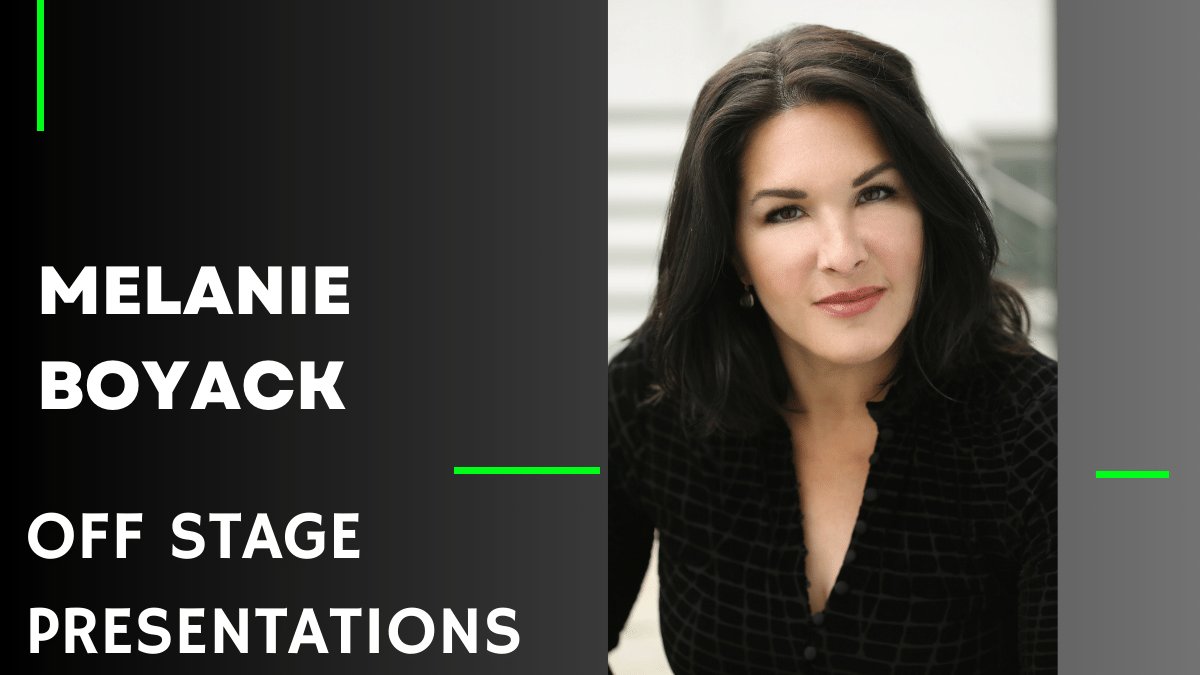
The traditional stage has long been associated with podiums and panels in public speaking. However, as the communication landscape evolves, so does the need for innovative platforms to reach diverse audiences. Melanie Boyack, a seasoned Keynote and Corporate Trainer based in Utah, shares insights into exploring alternative stages, from podcasts and live streams to social media debates and street art installations.
Podcasts: The Intimate Stage for Thoughtful Conversations
Podcasts have become an intimate stage for thoughtful conversations in an era dominated by on-the-go lifestyles and digital connectivity. Melanie Boyack advocates for the power of this audio medium, emphasizing the personal connection it establishes with the audience.
“Podcasts allow speakers to connect with their audience on a more personal level,” says Boyack. “There’s an authenticity that comes through when people hear your voice directly, allowing for a deeper engagement with the content.”
For aspiring speakers, venturing into podcasting offers a unique opportunity to share insights, stories, and expertise in a conversational format. It’s not just about what you say but how you say it, making podcasts an ideal space to develop a distinctive voice and connect with a broader demographic.
Live Streams: Breaking Down Geographical Barriers
Live streams have become the go-to platform for breaking geographical barriers and fostering real-time engagement. Boyack, who has experimented with live-streaming her talks, highlights the interactive nature of this medium.
“Live streams offer an immediacy that traditional stages often lack. Viewers can ask questions, share their thoughts, and feel like they are part of the conversation,” she notes.
This interactive dynamic enhances the speaker-audience relationship and opens doors to a global audience. Aspiring speakers can leverage live streams to connect with individuals who may have yet to have the opportunity to attend traditional events, thereby expanding their reach and impact.
Social Media Debates: Navigating the Digital Discourse
In the age of social media, debates aren’t confined to university auditoriums or conference halls. Platforms like Twitter, LinkedIn, and Instagram have become virtual stages for public discourse. Melanie Boyack encourages speakers to embrace these digital spaces for engaging in conversations and debates.
“Social media debates require different skills,” she observes. “It’s about conciseness, clarity, and the ability to navigate diverse perspectives in a condensed format.”
For speakers looking to broaden their reach, participating in online debates provides an avenue to showcase expertise while navigating the nuances of digital discourse. Engaging in respectful conversations on trending topics establishes credibility and positions speakers as thought leaders within their respective fields.
Street Art Installations: Speaking Through Visual Expression
Beyond the digital realm, Melanie Boyack explores unconventional stages like street art installations. While this may seem like an unexpected platform for public speaking, Boyack emphasizes the power of visual expression in conveying messages.
“Street art installations offer a unique way to communicate messages to a broader audience,” she explains. “It’s about using visual elements to spark conversations and engage people in unexpected places.”
For speakers with a creative flair, combining public speaking with visual art can create a memorable and impactful experience. Street art installations provide an immersive and unconventional stage, challenging the traditional boundaries of where public discourse can take place.
Adapting to the Changing Landscape
As the landscape of public speaking continues to evolve, Melanie Boyack urges speakers to be adaptable and embrace new platforms. Whether through podcasts, live streams, social media debates, or street art installations, finding your stage means understanding how people consume information and tailoring your message accordingly.
“Every platform offers a unique opportunity to connect with different audiences,” Boyack emphasizes. “The key is to be authentic, adapt to the medium, and continuously refine your communication skills.”
Conclusion
The traditional stage with podiums and panels is among many options. Melanie Boyack’s journey exemplifies the importance of exploring alternative platforms to engage diverse audiences and break free from the constraints of convention. In this ever-changing landscape, finding your stage is not just about speaking to a crowd; it’s about resonating with individuals in meaningful and unexpected ways.
